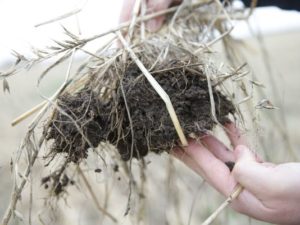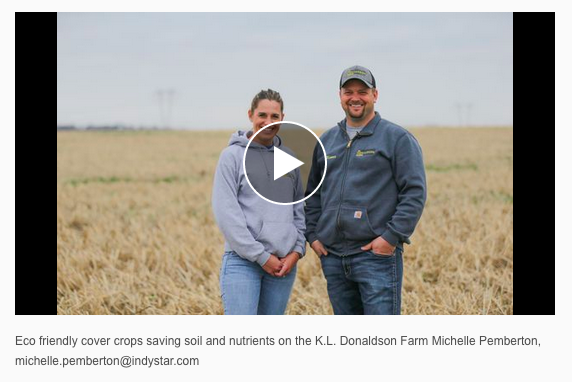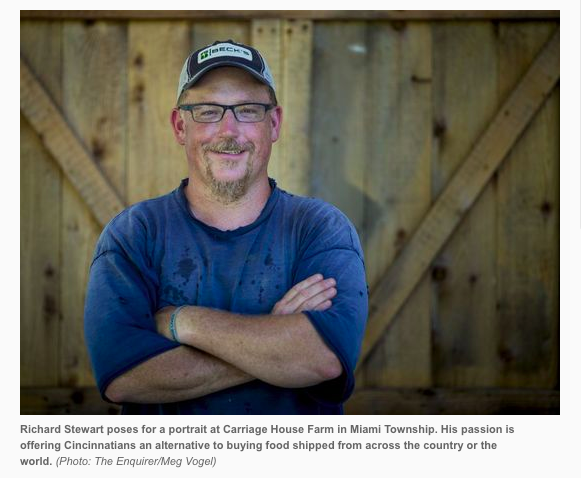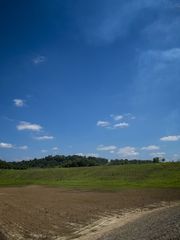USA Today: Produce is less healthy than it was 70 years ago. These farmers are trying to change that
by Carrie Blackmore Smith and Emily Hopkins, Cincinnati Enquirer | July 5, 2018
 There it sits — in all its green glory — in the produce section of your local grocery store.
There it sits — in all its green glory — in the produce section of your local grocery store.
Broccoli. One of the most nutritious vegetables on the planet.
But 70 years ago, it contained twice the calcium, on average, and more than five times the amount of vitamin A. The same could be said for a lot of our fruits and vegetables.
Why? How?
The answers lie in the soil and how Americans farm it.
Over the past two centuries, U.S. population growth and food production methods have stressed and degraded our dirt. Our farming soil is not as alive as it once was, and experts say that’s a problem.
It’s a complex issue, and there are various factors at play, but studies through the years draw a direct line back to American farms.
More and more farmers are recognizing they are part of the problem — one that extends beyond their farms, affecting the water quality in our lakes, rivers and oceans downstream.
Slowly, a soil health movement is spreading across the Midwest and other parts of America. Farmers are changing the way they farm, adding something called cover crops and changing up crop rotations. They’re finding ways to use less fertilizer, which is linked to decreased soil health and water degradation.
“This has an impact on everybody who eats,” says Eileen J. Kladivko, a professor of agronomy at Purdue University.
As states like Indiana emerge as leaders, experts say the movement is on the cusp of mainstream adoption – though much still stands in the way.
A troubled agricultural past
In the 1930s, dirt was a high priority in America. Much of the country was experiencing a crushing series of droughts that lasted eight years. Poor land management and farming practices gave rise to the Dust Bowl.
In those days, it was typical to plow a field to a pulverized, fine dirt before planting. So, when the extended dry spell hit, soil became loose and was swept away by intense dust storms that blotted out the sun.
Farmers couldn’t grow food. Millions were forced to leave their homes to find work. The ordeal resulted in the adoption of the uniform soil laws and the creation of the U.S. Soil Conservation Service — and was the birth of the modern-day soil health movement.
At the time, the effort focused on erosion or, simply, how to keep the dirt in place.
Still, we continued to harm the soil — unintentionally, said Harold van Es, a professor of soil and water management at Cornell University.
In the 1950s, farmers began using synthetic fertilizers. The fertilizers weren’t bad in and of themselves, said van Es, but they allowed for a new way of farming in America that would often further degrade the soil.
So, many farmers stopped raising livestock for their manure and focused only on cash crops, like corn and soybeans, which go into many products.
Farmers began producing one or two crops, planted year after year. Over time, the combination of these things lowered the biodiversity of the soil. Healthy soil should be teeming with microbes and worms and rich with decomposed organic matter (think: compost).
Today, the government budgets billions of dollars — $6.7 billion in 2017 alone — for conservation through the Farm Bill. That funding goes toward agencies like the Natural Resources Conservation Service, the successor to the Soil Conservation Service that offers financial and technical assistance to farmers to adopt practices like cover crops.
“I think we’ve reached a tipping point in terms of awareness and experimentation,” van Es said. “In terms of adoption, we simply need more farmers to start doing it.”
Changing how we farm to focus on the soil
Richard Stewart manages Carriage House Farm in southwestern Ohio, and he’ll tell you what’s happening on the 163-year-old farm, owned by his family now for five generations.
His goal one day is to stop conventional farming — growing corn and soybeans for animal feed and export — and instead only grow and raise things people eat. His family converted about 60 acres from its 300-acre farm to produce fruits, vegetables, honey and, recently, a line of vinegar.
Stewart is paying close attention to the soil.
And he’s learned, for example, to plant a cover crop of mustard before he grows a crop of potatoes. The mustard keeps away the Colorado potato beetles, which, you probably guessed, love potatoes but not mustard.
He makes sure there is a good strip of trees and native plants between his fields and the Great Miami River, because he wants to keep his soil in place and avoid any runoff that might hurt water quality.
“I’ve got kids. My child may be the seventh generation that farms this property, but that is not even a blink in the eye of the history of this planet,” Stewart said. “The Shawnee were people who farmed and hunted this land 3,000 years prior to us and we’ve taken more nutrients out of the soil than human beings did the last 3,000 years.”
Across the country, other farmers are compelled to improve their soils.Take Indiana, for example, where the number of farm acres sowed with cover crops more than quintupled in just five years.
Cover crops involve planting something on the field during the offseason, so there’s always something growing.
Keeping something growing holds the soil in place, and when the cover crops grow and die they add organic matter, attracting microorganisms, adding nutrients — and creating healthier soils. But Indiana still has a long way to go. Just over 90 percent of cropland in the state still goes without cover crops.


